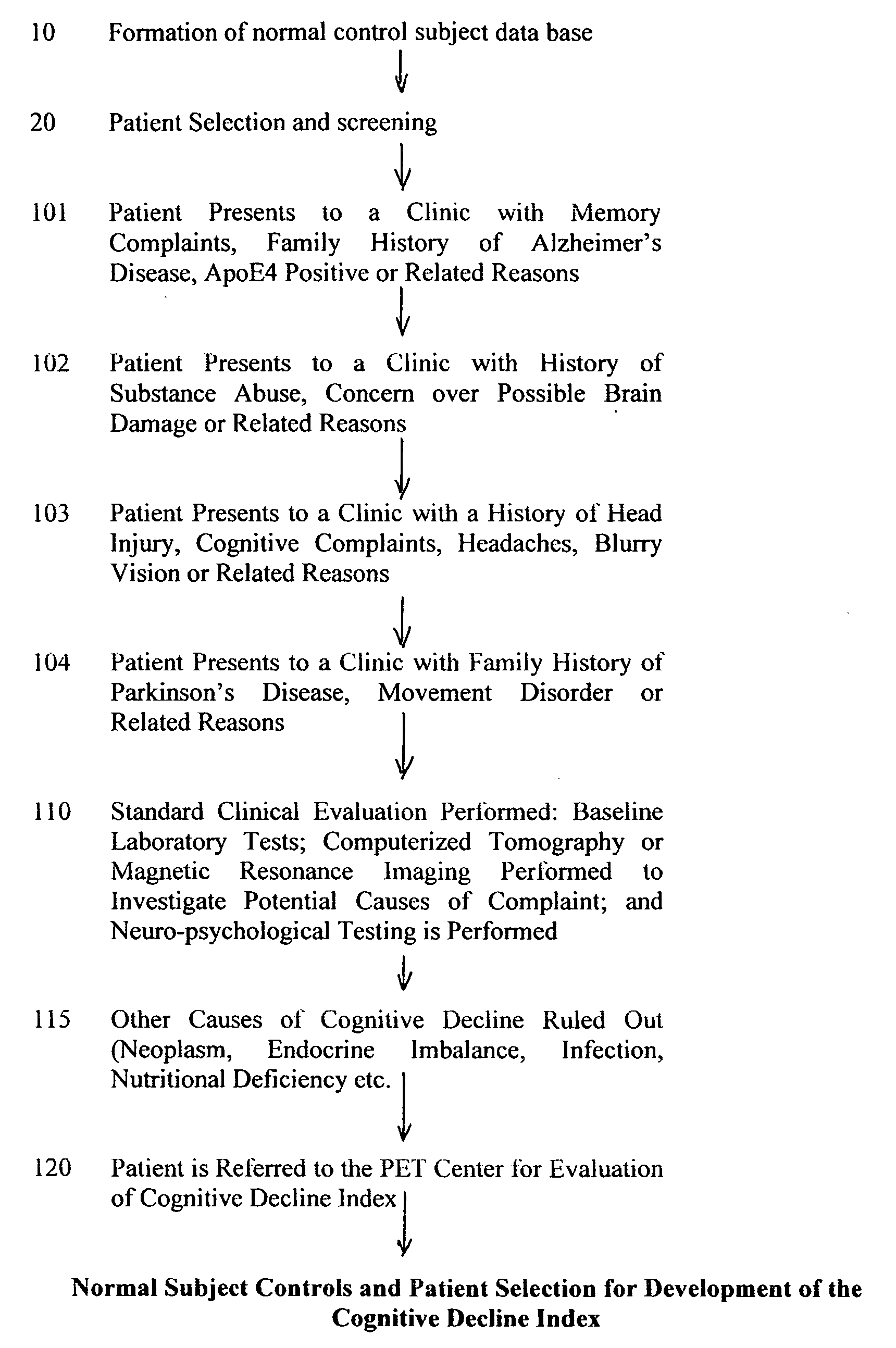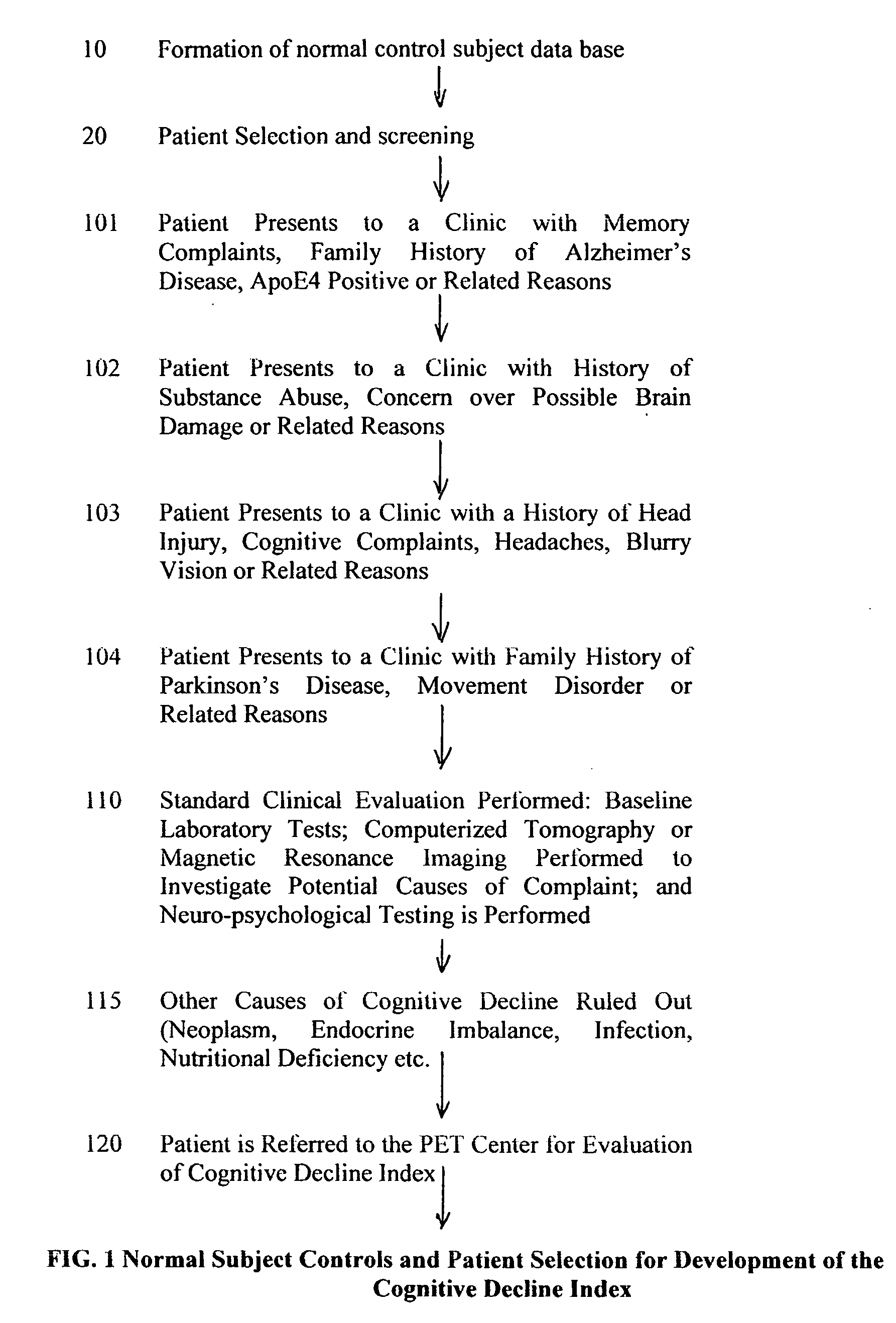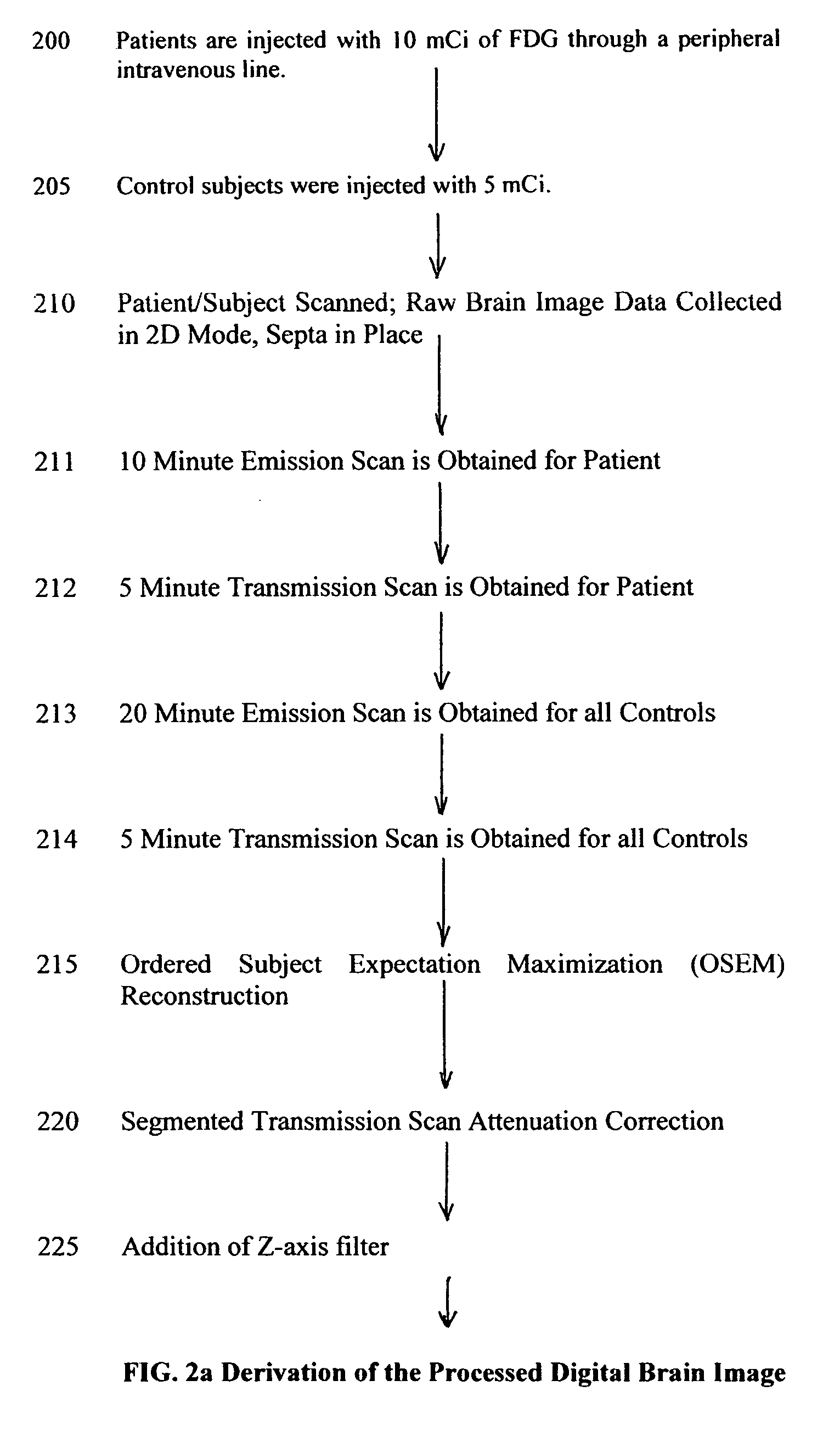Methods for using pet measured metabolism to determine cognitive impairment
a cognitive impairment and metabolic technology, applied in the field of diagnostic imaging and radiology, can solve the problems of closed head injury and lack of quantitative diagnostic methods for concomitant cognitive impairment, and achieve the effects of enhancing and prolonging life, high sensitivity of cdi, and straightforward mathematical algorithms
- Summary
- Abstract
- Description
- Claims
- Application Information
AI Technical Summary
Benefits of technology
Problems solved by technology
Method used
Image
Examples
Embodiment Construction
[0075] The data, analysis, calculations and procedures forming the preferred embodiment were produced in studies of four groups of patients: [0076] 1. Control subjects from the normal control database, [0077] 2. Patients identified retrospectively with early cognitive decline who received negative PET workups, [0078] 3. Patients identified retrospectively with cognitive decline and with the pathognomonic changes of AD present on PET imaging, [0079] 4. Patients with MCI from the pilot study.
The data and statistics used as exemplars in the figures and tables are taken from these studies.
[0080] Referring first to FIG. 1, a database 10 is compiled for normal control subjects.
[0081] The database of FDG brain scans from healthy control subjects was created to enable the objective examination of a variety of patients who presented for clinical evaluation of cerebral pathology. These subjects are physically examined and screened for neurological and psychiatric illness. Entry into the d...
PUM
 Login to View More
Login to View More Abstract
Description
Claims
Application Information
 Login to View More
Login to View More - R&D
- Intellectual Property
- Life Sciences
- Materials
- Tech Scout
- Unparalleled Data Quality
- Higher Quality Content
- 60% Fewer Hallucinations
Browse by: Latest US Patents, China's latest patents, Technical Efficacy Thesaurus, Application Domain, Technology Topic, Popular Technical Reports.
© 2025 PatSnap. All rights reserved.Legal|Privacy policy|Modern Slavery Act Transparency Statement|Sitemap|About US| Contact US: help@patsnap.com



